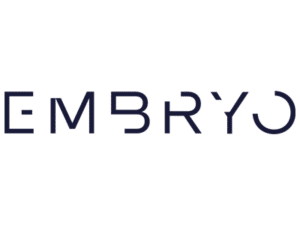AI is transforming the business landscape – but it’s leaders who will shape what that future looks like. Alice Aspinall, founder of Twisted Loop, sets out how leadership will define who gets it right…
Almost every organisation is investing in AI in some shape or form. But beneath the headlines, the reality tells a different story. Just 1% of business leaders believe their AI deployments are mature. While 57% express confidence in their AI strategies, only 28% feel moderately prepared to deploy AI from a data perspective and a just 9% consider themselves truly AI-ready.
The gap between intention and action is real – and widening. Leaders often cite ’employee readiness’ as a key barrier to AI adoption. Yet, research shows employees are already experimenting with AI three times more than their leaders realise. The truth is, it isn’t frontline teams slowing AI adoption – it’s hesitation at the top.
READ MORE: Scaling with an exit in mind – if we can make it through the madness, so can you
This is not the first time leadership has faced a defining inflection point. When the Industrial Revolution reshaped the world, leaders couldn’t stay as hands-on craftspeople. They had to become system-builders, organisers of people, process, and scale. It was Richard Arkwright who transformed the textile industry, not by inventing machinery but by pioneering the factory system.
In the 90s, when computing and automation disrupted business, leadership shifted once more. Command-and-control gave way to collaboration, and success favoured those who could empower teams, not just issue orders. The internet only accelerated that shift.
And now AI is here as a force that will define how businesses compete, how teams operate, and most importantly, how leaders lead.

The leadership shift: from knowledge to insight
The knowledge economy (1980–2020) rewarded those who hoarded expertise. Authority came from having the answers. Control came from centralisation. Success favoured experience.
The insights economy we’ve entered is different. Speed, adaptability, and the ability to orchestrate the right questions matter more than how much you personally know.
| Leadership dimension | Old knowledge economy (1980 – 2020) | New insights economy (2020+) |
| Decision-making | Experience, intuition, gut feel | Real-time, insight-driven, iterative |
| Control | Centralised, approval-heavy | Distributed, trust-based |
| Communication | Top-down, message-driven | Conversational, AI-augmented |
| Expertise | Leader as answer-giver | Leader as question-framer & enabler |
| Change leadership | Risk-managed, linear | Proactive, experimental, networked |
| Ethics | Compliance as a tick-box exercise | Trust, transparency, and AI accountability measured as core performance metrics |
We’re seeing first-hand how leaders are defining the success or failure of AI adoption in their businesses. If you have the willingness to learn and be curious about what’s happening inside your enterprise and build the systems to enable and interrogate that process, you will reduce your decision cycles and improve the confidence in your decisions at the board level.
You’ll also reduce manual workload and free your teams up to focus on innovative ways to grow, rather than spend parts of their day doing things a machine can do faster and better.
Behavioural science models like Social Learning Theory show us that teams mirror their leaders; curiosity and visible action from the top accelerates change, hesitation and lagging behind kills momentum. Status quo bias and risk aversion thrive in uncertainty -but leaders who engage with AI set a confident norm that lowers those psychological barriers. Research is ever growing in this area and the numbers are backing up a top-down approach – two thirds of executives that drive AI leadership in their organisations are already seeing a 25%+ lift in their revenue growth rate.
So for all the focus on AI’s risks, the real risk for most businesses is passive leadership and an unwillingness to change. Your competitors aren’t hesitating and the markets are responding favourably to AI-augmented businesses – as a leader, you are pivotal to enacting cultural adoption of these new technologies in your business.
The practical playbook: how to lead differently – starting now
How you approach your identity, habits, and culture are key to making strong and lasting changes to your leadership style and your business. Here’s our practical advice on evolving as a leader and empowering your teams:
1. Redefine your role
Most resistance to AI isn’t about capability – it’s about identity. Leaders fear losing their expert status, their certainty, their authority.
It’s time to rethink what your role demands.
In your old role: You had the answers.
New role: You build the system that gets better answers – faster, through teams and machines working together.
This quarter, challenge your leadership team to consider:
- “What are our critical business problems and strategies, and can AI be used to deliver those strategies?”
- “What is the AI maturity level of our employees?” (you might be surprised here), and “what are the kind of initiatives that should be in place to upskill employees on critical competencies?”
- “Is our data AI-ready?” that is, are your datasets fragmented or incomplete? If so, you need to cleanse your data to ensure it is ready to provide game changing insights.
Become the Curious Director – that’s where your value now lives.
2. Change your habits
Redefining your role is only the starting point. If it doesn’t translate into daily actions, you won’t see progress. To lead differently, you need to operate differently – consistently, visibly, and without exception.
This week, create a new habit loop. For instance:
- Cue: Preparing for a decision or meeting
- Routine: Engage AI for insights or alternative perspectives
- Reward: Faster, better-informed, more confident decision-making
Over time, this reinforces the identity: “I’m the leader who uses AI to enable smarter, better decisions.”
3. Make AI engagement visible
Lead from the front. If you’re developing internal AI tools, use them openly – not behind closed doors. You’ve probably realised by now that your teams are experimenting with AI to enhance their own work whether you like it or not. When you make your engagement visible, you create the opportunity to channel their curiosity, coordinate their efforts, and build momentum around the right behaviours. This reduces risk and helps you guide how you want AI to be used across the business, rather than letting fragmented, unsupervised adoption quietly take hold.
At your next board meeting, pose:
“For this discussion, I asked our AI assistant to summarise customer sentiment – here’s what it showed.”
Or, if you’re not at that stage yet:
“I’ve been exploring where AI could help us make better, faster decisions – especially in areas like customer sentiment or performance insights. If any of you are already using AI in this space or have ideas, I’d love to hear them.”
Normalise AI as part of how the team works. Confidence follows visibility, and from there, you have a better chance at widespread adoption.
4. Celebrate experimentation, not just results
Progress comes from learning, not perfection.
Throughout this quarter in town halls, strategy sessions and 1:1s:
- Run workshops (yourself or ask external speakers) to get your teams thinking about the most impactful AI use cases across the business – these ideas can kickstart your experimentation process and form your development backlog should you begin to build bespoke AI tools. Research shows that organising workshops for entire leadership teams to learn and discuss AI gains better traction than leaders training themselves5.
- Encourage teams to run small AI experiments relevant to their business area and request results even if they were mixed or unsuccessful. A test, fail, learn, succeed culture is absolutely necessary to effective AI adoption.
- Launch a new internal comms method – a Slack channel or Teams chat for instance – where teams can actively share AI news, thought leadership, great prompts and new ideas and experimentation results
Publicly reward teams or individuals showing curiosity – not just those delivering polished outcomes. It signals to your whole organisation that learning, not flawless execution, drives progress.
The markets wait for no one
AI is industry-agnostic. It is being coded into your existing systems, improving its capabilities at a pace unlike any other computing technology.
While helping clients across a range of industries, the twisted loop team and I are witnessing large-scale disruption first-hand.
In finance, those with an AI-augmented approach are modelling risk better, becoming incredibly adept and efficient at deal origination, and ultimately provide an exciting proposition of speed, accuracy and thoroughness that prospective clients are readily buying into.
Leaders of marketing agencies are capturing a greater share of their target markets because they’re creating hyper-personalised campaigns and insights for clients at breakneck speeds.
CEOs of logistics companies are more adaptive to fluctuating macroeconomic factors, creating innovative ways of efficiently supplying demand in real-time.
Why? Because their leadership teams, regardless of their technical expertise, know they need to bake AI into the fabric of their business to not only maintain their position, but to accelerate ahead of their competitors.
Your challenge for the next quarter
Wherever your business sits today, we’re challenging you to move further, faster, and lead this shift with intent.
Use this AI leadership persona table to map your current progress and take the board-level action proposed at each stage. Understand the criteria for your evolution across personas.
| AI leadership persona | Board-level action (next 3 months) | Signs you’re progressing |
| The Observer You’re aware AI is reshaping industries. You observe trends, attend talks, maybe play with AI tools – but AI hasn’t meaningfully shaped your business decisions, culture, or value proposition yet. | Table a strategic discussion with your board on AI as a business risk and opportunity Position it alongside digital transformation or cybersecurity, not as a tech project. | You initiate AI conversations with your team and board, moving from passive interest to structured exploration. |
| The Facilitator You actively encourage AI exploration within your business. You trial tools, support team experiments, and start understanding how AI could enhance operations, marketing, or client value – but AI isn’t yet a strategic lever. | Commission an AI capability assessment Map current AI use, competitor activity, and quick-win opportunities for growth or efficiency. | You can articulate where AI fits into your business model and operations. Your leadership team shares a clear, aligned view. |
| The Integrator You drive AI as a formal business lever. AI informs your growth strategy, client offers, operations, and culture. You proactively shape where, how, and why AI is adopted – internally and in the market. | Embed an AI value creation roadmap into your growth strategy Define AI’s role in client offers, operational efficiency, and team capability. | Clients, team members, and investors associate your business with AI-enabled growth. AI moves from project to strategic lever. |
| The Market Shaper You lead beyond your own business. You shape AI adoption in your sector, influence clients’ AI strategies, and contribute to broader AI narratives. Your organisation is seen as an AI-enabled growth leader. | Formalise an AI strategy for your industry Pursue speaking opportunities, partnerships, or research to establish your leadership beyond your business. | Your business is recognised as a trusted guide for AI adoption. AI is woven into your brand, reputation, and market positioning. |
How twisted loop can help
We’re a consultancy that helps ambitious businesses unlock new value, by turning vision into capability and capability into growth.
We work at the intersection of strategic definition & execution and Data & AI delivery, helping our clients to:
- Scale operations with intelligence and precision
- Embed the data & AI capabilities required for future growth
- Unlock new sources of enterprise value
- Build internal confidence to lead the next phase of growth
Whether you’re scaling a business or evolving a portfolio (whether you’re seeking greater efficiency, looking to scale, or want to head in a new direction), we help you progress with clarity, confidence and capability. Contact Twisted Loop here or follow the team on LinkedIn here.












